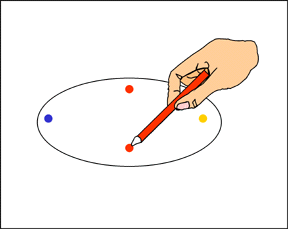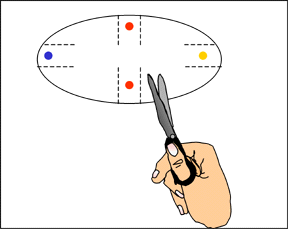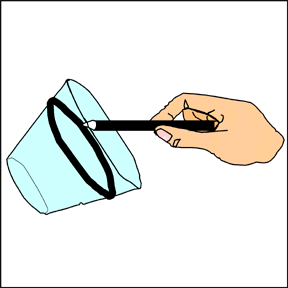Contributed by: New York State Alternative Assessment in Science
Project (NYSED)
4th Grade Performance Task
Description:
Students observe bleeding of colored inks with water. The task
assesses students' abilities to make simple observations, to understand
mixtures, and to make generalized inferences from their observations.
This task is designed to take students approximately 10-15 minutes
to complete.
Overall Task Content Area:
- Physical Science
Specific Knowledge Areas:
- Properties of objects and materials
Performance Expectations:
- conducting investigations
- using equipment
- gathering, organizing, and representing data
- formulating conclusions from investigational data
- applying scientific principles to develop explanations and solve
new problems
National Science Education Standards:
4 B PS 1: Properties of objects and materials: Grades K-4
1.1 Objects have many observable properties, including size,
weight, shape, color, temperature, and the ability to react with other
substances. Those properties can be measured using tools, such as
rulers, balances and thermometers.
4 A SI 1: Abilities necessary to do scientific inquiry:
Grades K-4
1.4 Use data to construct a reasonable explanation. This
aspect of the standard emphasizes the studentsí thinking as they
use data to formulate explanations. Even at the earliest grade levels,
students should learn what constitutes evidence and judge the merits
or strength of the data and information that will be used to make
explanations. After students propose an explanation, they will appeal
to the knowledge and evidence they obtained to support their explanations.
Students should check their explanations against scientific knowledge,
experiences, and observations of others.
(Use the "hot" link on the PALS home page to
check the full text of related National Science Education Standards,
if desired.)
National Council of Teachers of Mathematics:
AL1: Understand patterns, relations and functions:
Grades pre K-5 a. sort, classify, and order objects by size,
number, and other properties
AL4: Analyze change in various contexts :
Grades pre K-5 a. describe qualitative change, such as a
student's growing taller
RP2: Make and investigate mathematical conjectures:
Grades pre K-5
COM1: Organize and consolidate their mathematical thinking
through communication:
Grades pre K-5
General Instructions to the Teacher:
This task is designed to take students approximately 10-15 minutes
to complete.
Students will be working individually during this exercise.
Students should be ready to work as soon as the period begins.
The materials should be set out at each lab station, if possible.
A central supply area, if needed, should be easily accessible. All
supplies should be clearly labeled.
Materials for "Colored Dots II":
The Teacher needs:
- 1 yellow water soluble marker
- 1 red water soluble marker
- 1 green water soluble marker
- 1 black water soluble marker
- scissors
- 1 thin line black permanent marker
- extra paper towel
- filter papers (9 cm diameter)
- extra prepared filter papers
At this station students should have:
- 1-5 oz clear plastic cup of water
- 1- filter paper with colored dots
- paper towel
Advance Preparation:
- Cut the filter paper with 4 tabs (about 1 cm x 3 cm) as shown
in the diagram below. Place a different dot on each of the four
tabs about 1 cm from the end.
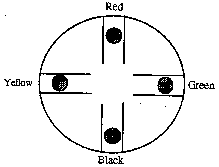
- On the clear plastic cup, draw a thin line with a black permanent
marker all the way around the cup about 4 cm from the bottom of
the cup.
- The line will serve as a fill line for the water. The tabs from
the filter paper should just reach the top of the
water line.
- You may have to adjust the tab cuts on the filter paper or the
fill line on the clear glass.
Safety:
- Be careful.
- Teachers and students should always exercise appropriate safety
precautions and utilize appropriate laboratory safety procedures
and equipment when working on science performance tasks.
Extensions/modifications:
- Colored Dots 1 and Colored Dots 3
- Task does not easily lend itself to including mathematical criteria
in the rubric.
Advanced Preparation Set Up:
| Student: 1) Fill cup with water to "water
line." |
2) Place filter in cup. |
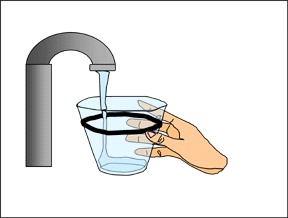 |
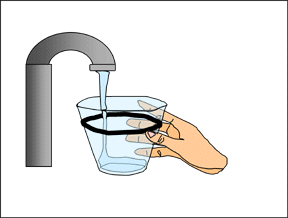 |
| |
|
|


